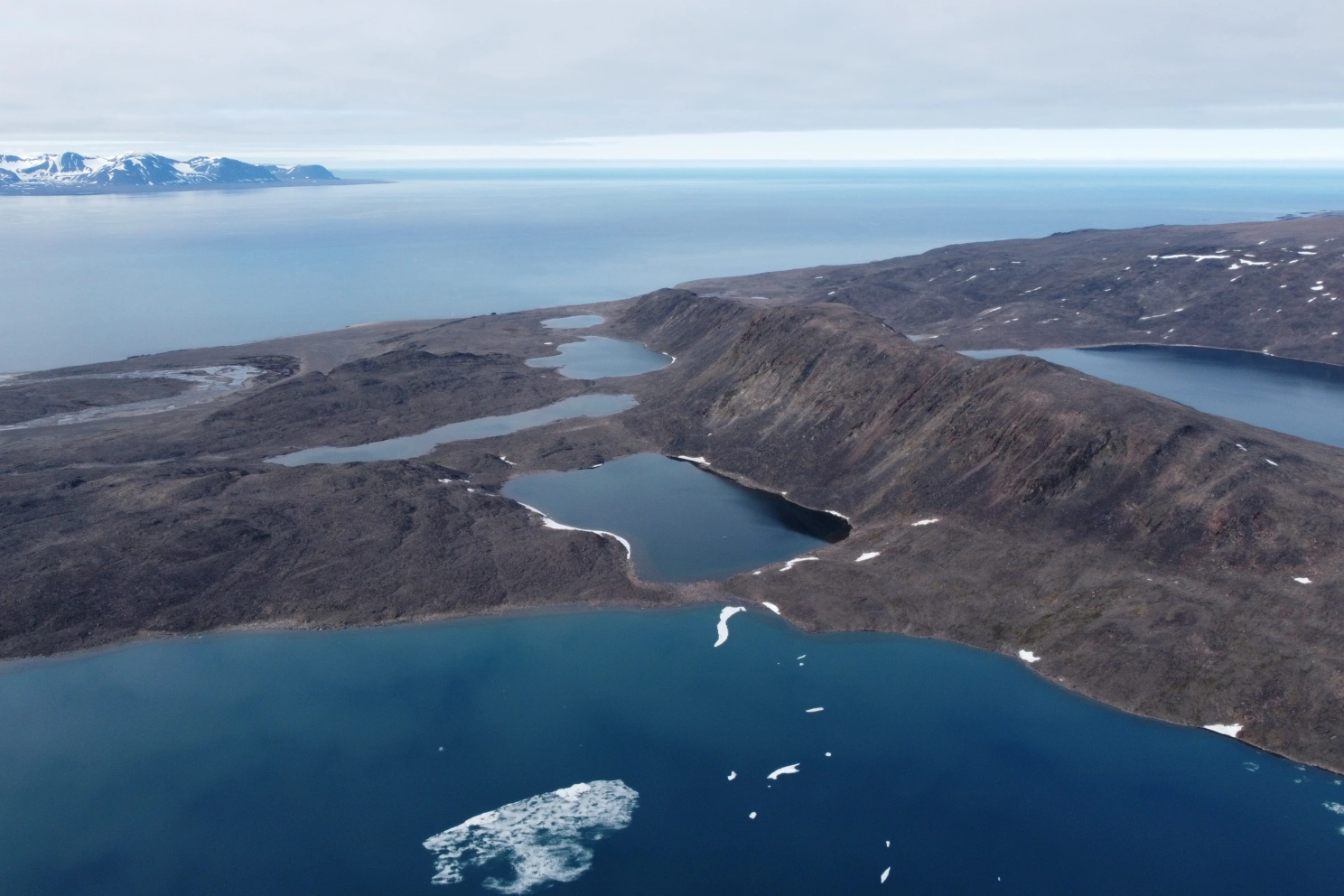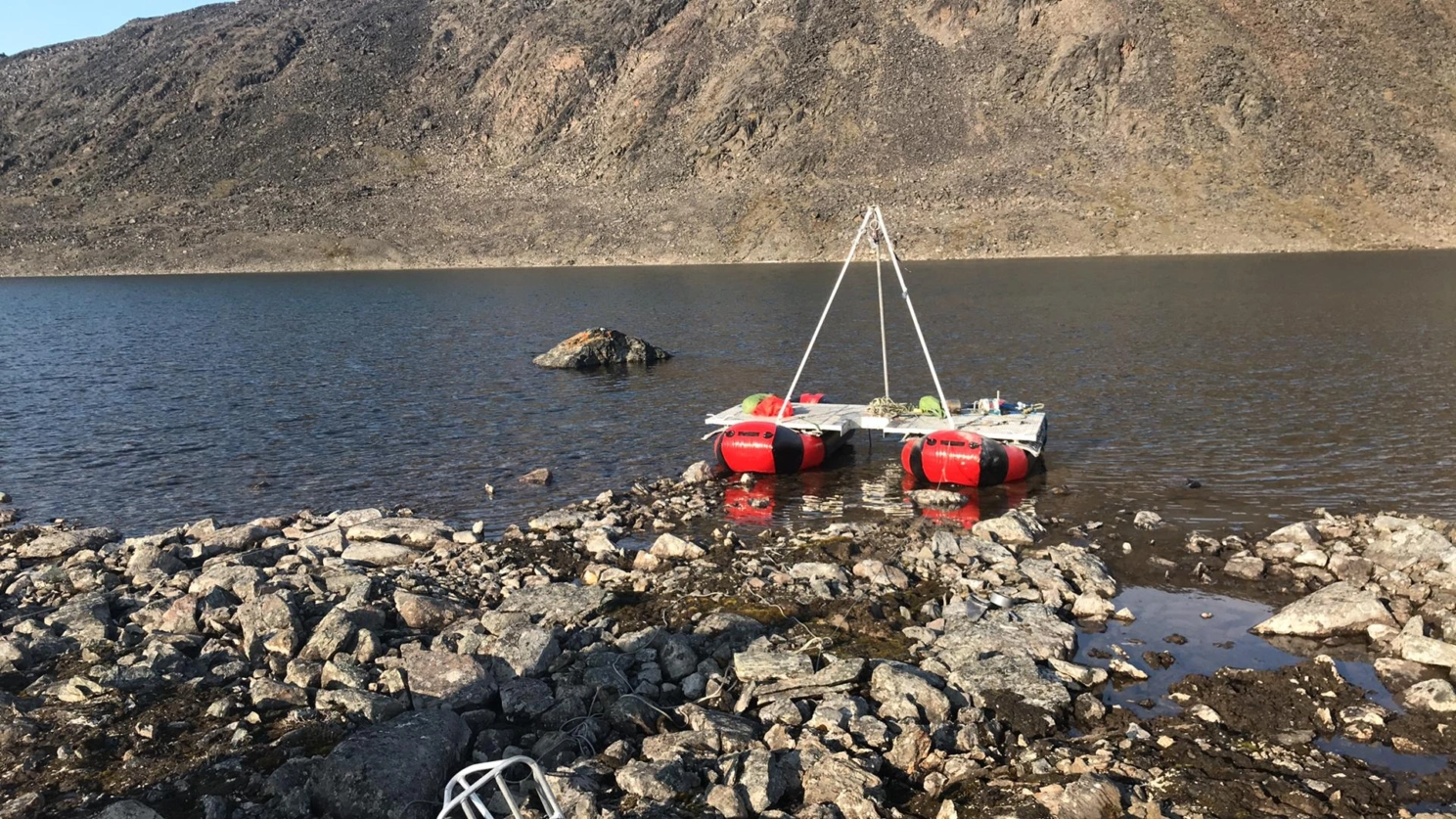How can we tell temperatures from thousands of years ago?
Sher-Rine Kong has been studying a lake in Svalbard, and her findings suggest that temperatures during the Early Holocene - around 11,700 years ago - were up to 3.5 °C warmer than today. But how can they know what the lake temperature was back then?
Publisert 21. October 2025
Written by Tori Pedersen

The Svalbard-lake Kong looked at is number two from the ocean. Photo: Sander van der Plas
The key lies in tiny molecules called alkenones - produced by an alga that once lived in the lake. Her team measures how these molecules respond to temperature changes, which affects the algae that produce them. Over time, these molecules settle into the lakebed and become part of the sediment record, layer by layer.
The researchers extract sediment cores from the lake and analyze the alkenones preserved within. Using a high-tech device called an Accelerated Solvent Extractor, they isolate the lipids with a specific solvent mixture ratio. This process produces what is known as a Total Lipid Extract (TLE) - a complex mixture that includes alkenones and other organic compounds.
In the video below, you can see how Kong is working with the biomarkers at the lab. Kong is PhD Candidate at the University of Bergen and the Bjerknes Centre for Climate Research.
But the work doesn’t stop there. The team then separates the alkenones from the rest of the mixture based on their chemical polarity, using a method that separates the extract into non-polar, semi-polar, and polar fractions. The semi-polar fraction contains the alkenones, which are then measured using Gas Chromatography-Flame Ionization Detection - a technique that allows scientists to accurately quantify the molecules with high precision.
To ensure the accuracy of their past temperature reconstructions, her team further analyzes modern surface sediments from the same lake by incorporating a novel technique called Mass Spectrometry Imaging (MSI). This allows them to calibrate their data against actual recorded temperatures from the closest weather station to their studied lake, making sure their past spring temperature estimates are grounded in reality.
Together, these techniques paint a vivid picture of a much warmer Arctic in the distant past.
PASTFACT
The project seeks to provide quantitative past constraints on a warmer and wetter future Arctic climate.
While warming faster than anywhere else on Earth, the Arctic also becomes much wetter: precipitation totals increase more than twice as fast as the global mean. A wetter future Arctic will have global impacts: when falling as snow, precipitation increases can offset melt of the region`s land ice – the main driver of near-future sea-level rise. Despite these consequences, the future response of the Arctic hydrological cycle remains poorly constrained and predictions vary greatly between models, disagree on the seasonality of change, and underestimate observations.
Paleoclimate data from warmer-than-present periods can close these critical gaps by providing empirical constraints on this uncertain future. PASTFACT proposes to do so by targeting lake sediments from the Early Holocene – the best-preserved past period when Arctic surface temperatures exceeded modern values. A new generation of techniques like isotopic tracers of hydroclimate, molecular fossils of past temperatures and 3-D sediment source fingerprints permit us to harness the full potential of this unique window into the future. To do so with unmatched precision, PASTFACT will integrate these method advances in a highly innovative modelling framework.
The proposed transformative toolbox allows us to quantify the uncertain seasonality, temperature sensitivity and magnitude of hydrological intensification in a warmer wetter Arctic, and constrain the impact of these changes on the cryosphere. This ground-breaking approach builds on the expertise of the PI, cutting-edge research infrastructure and world-class collaboration. When completed, PASTFACT will advance our understanding of the uncertain interplay between Arctic warming, wetting and ice loss well beyond the state-of the-art.
PASTFACT project is funden by the Trond Mohn Stiftelse (TMS).

Photo: Sander van der Plas
References
Brassell, S.C., Eglinton, G., Marlowe, I.T., Pflaumann, U., Sarnthein, M., 1986. Molecular stratigraphy: a new tool for climatic assessment. Nature 320, 129–133.